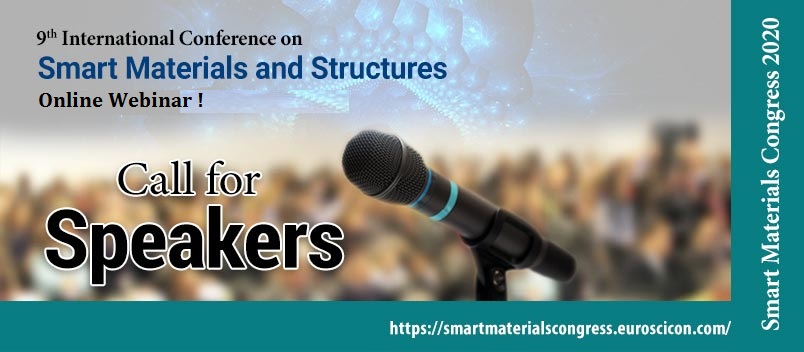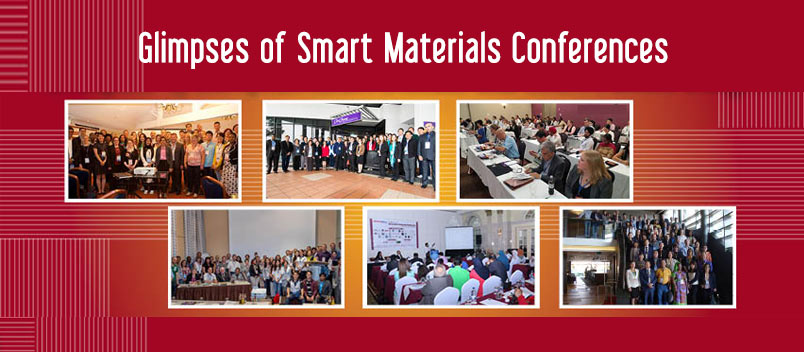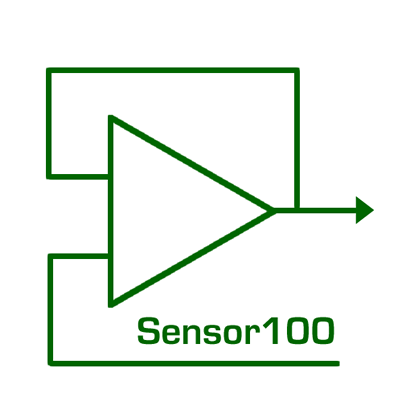Smart Materials Congress 2020
About Conference
Smart Materials Conference team grandly welcome all the participants from all over the world to attend the “9th Online Edition of International Conference on Smart Materials and Structures. Smart Materials Congress 2020 includes prompt keynote presentations, oral talks, poster presentations , scientific sessions, plenary lectures, world class Exhibitions, diverse Symposiums, highly enriched workshops and B2B meetings related to Material Science, Smart Materials, Materials Structures, Mechanical, Computers, Electrical & Electronics, Material, Biomaterial, Materials Chemistry, Architecture & Civil, Medical Sciences & Related Departments. All Academia and Business Companies find the fantastic opportunity to collaborate and access the New Technologies, sharing the knowledge across the globe.
Importance and Scope:
Smart Materials are the group of materials which are also called as functional materials. The energy forms that get featured in materials are thermal energy, electric energy, magnetic energy, sound energy & mechanical energy. Smart Materials or smart structures are those which join the category of actuators and sensors that highly incorporate into the structures and have basic functionality and in addition extremely integrated control logic, signal power amplification electronics and signal conditioning. The Smart Materials is anticipated to be the significant revolutionary force that results in influencing the human life and economy. It is strongly understood that mutual impact of industrial and information technology may approach the magnitude of change that could result from commercialization of Smart Materials.
Why to attend:
Smart Materials with its running theme aims in accelerating the research and in promoting the knowledge across the globe. Smart Materials Congress 2020 conference is the best podium to exchange ideas and to make new contacts with new people and organizations internationally. It is an eccentric occasion to collaborate with numerous people through collaboration spaces and break-out rooms. It allows delegates and the speakers to access the new technology and to get aware of the current trends in the field of Material science, Smart Materials, Mechanical, Civil, Automobile, Aviation, Nanotechnology, Electronics, Electrical, Biotechnology, Medical, Defence related fields.
Target Audience:
Material Science, Smart Materials, Computers, Electrical & Electronics, Physical Sciences, Nanoscience &Nanomaterials, Biomaterials, Materials Chemistry, Mechanical, Architecture & Civil, Medical Sciences & related Departments, societies & associations
- Eminent Scientists
- Research Professors & Research fellows
- Directors & Materials Engineers
- Students
- Members of different Smart Materials Associations & Societies
- Engineering Professors & Faculty
- Pharmaceutical Companies
- Medical Devices Software Developer Companies
Sessions/Tracks
Track 1: Smart Materials and Technology

Smart Materials are defined as “Materials that can significantly change their mechanical, thermal, optical, or electromagnetic properties, in a predictable or controllable manner in response to their environment” as there are many possibilities for such materials and structures in the manmade world many innovations are happening in the field of material science that are enough smart to help human beings in an any of the ways like structural health monitoring, self-repair, defence and Space, Nuclear Industries, Reducing wastes. Smart materials also have many applications in different fields of medicine and engineering and the rise in demand for the smart materials is enough to believe that there is a great scope for the smart materials in the future. Smart materials can be classified in to active smart materials and passive smart materials.
- Piezoelectric materials
- Magnetostrictive materials
- Magnetic shape memory alloys
- Smart inorganic polymers
- pH sensitive polymers
- Temperature responsive polymers
- Halochromic materials
- Chromogenic systems
- Self-heating materials
- Dielectric elastomers
Track 2: Smart Structures

A smart structure is a versatile system and combination of controlling , sensing and actuation steps which is like an elemental analogue of human body. Each smart materials acts as unit cells for smart structures in which each cell performs both sensing and actuation functions. It has capability to check for more than one optimum condition and exhibit its function. Smart Structures resist natural calamities and satisfies all the technological demands. Based on the level of sophistication, the smart structures are further classified as Sensory Structures, Adaptive Structures, Controlled Structures, Active Structures, Intelligent Structures
- Material Structure Prediction
- Inorganic MicroStructures
- Composite Materials and Adaptive Structures
- Deformation of Layered Structures
- Structural Properties of Materials
- Structural Engineering and Ceramics
- Green Buildings
- Metals, Alloys and Composites
- Smart Design and Construction of Special Structures
- Data Acquisition and transmission
- Command and Control Units
- Action Devices
- Architectural Smart Materials
- Embedded Data Collectors (EDC)- Wireless Pile Monitors
- Vibration Control of structure – Piezoceramics
Track 3: Material Science and Engineering

Materials science is a hybridizing discipline which is mainly of design and discovery of new materials. It is the first academic discipline emerged by chemistry of fusion rather fission. The new academic discipline emerged by fusion of metallurgy, ceramics, solid-state physics and chemistry is the field which deals with identification, study and design of materials. Several properties namely bonding nature, shape, form and several other characteristics of a material is discovered so that the materials can be used to their maximum benefit in respective areas. The discipline is important both from a research perspective, as well as from an industrial one.
- Computational Modelling & Simulation
- Advanced Materials
- Engineering Applications of Materials
- Surface Engineering
- Metamaterial Technologies
- Femto technology
- Materials for Personal/Home Care & Cosmetics
- Additive Manufacturing
- Surface Repellency, Wetting & Adhesion
- Forensic Materials Engineering
- Industrial Applications
Track 4: Architecture and Civil Engineering

Architectural technology which is one of the major sectors of civil engineering, which includes advanced innovations in structural engineering, which is very much concerned about the structures or building. In the construction industry, developmental projects usually require the knowledge and understanding of civil engineering and architecture. These are important disciplines that deal with the process of creating structures, such as buildings, airports, churches, houses etc. Both Civil Engineering and Architecture are involved in planning and designing structures. However, architecture focuses more on the spatial functionality and aesthetics of the developmental work and is more concerned with the artistry, look, feel and functionality of the design, while Civil Engineering concentrates on the structural elements of the design, making certain that the structure can endure normal and extreme conditions. Some of the major applications of smart structures include sea defence systems against raising sea levels, underwater - on water constructions, floating and green cities architecture.
- Architectural Technology of Structural Engineering
- Geotechnical and Environmental field
- Structural Dynamics and Earthquake Engineering
- Structural Engineering and Concrete Technology
- Transportation & Construction Engineering Concepts
- Under Water-On Water Constructions
- Floating and Green Cities Architecture
- Vibration Control Of Structures-Piezoceramics
- Smart Bricks and Fluids
- Super Elasticity Materials
- High Tensile Steel
- Material Properties
Track 5: Nanomaterials and Nanotechnology

Materials with any external dimension in the Nano scale or having internal structure or surface structure in the Nano scale. It has high surface to volume ratio hence very reactive. Bottom Up and Top down are the two methods for the preparation of nanomaterial. Nano Materials are designed for the benefits in various fields of applied Sciences and Engineering. These materials are Nano in size but have a big impact in the field of material science and engineering. Nano materials are smart materials with definite order of structures. Nanotech research involves practical applications in smart sensors and smart delivery systems and used as Magnetic Nano devices, Nano-Biosensors, Nano switches and Optical biosensors. Few famous nanoparticles used in industries are monometallic, bimetallic, iron oxide, titanium dioxide and zinc oxide. Nanoparticles in sunscreen, cosmetics, some of the food products, used as chemical catalyst, very good adsorbents, Carbon Nanotubes for stain-resistive textiles, and cerium oxide as a fuel Catalyst.
- Nano Plasmonics
- Nanotubes, Nano rods and nanowires
- Nano fibers, Nano films and Nano composites
- Nano powder and nanoparticles
- Smart Nano devices
- Nanoscale Structures
- Green Nanomaterial and Its Application
- Carbon, graphite and Graphene
- Biomedical applications
- Drug delivery
- Medicine
- Dentistry
- Military
- Bio sensing
- Defence
Track 6: Smart Control Systems

Smart Materials have a wide range of applications in the field of engineering. They are used in Marine, Aerospace, Computer and electronic devices, Buildings and Structures, Medical Equipment Applications and many more. Smart Materials are also used in much intelligent clothing technology, wearable technology which involves the use of e-textiles. It is used in the structures of civil Engineering and Architecture which disclose and uncovers the ancient and spectacular architectures by human or modify the earth’s geography. The recent research in different areas such as civil engineering, structural engineering and archaeological technology is going on with different principles of environmental, geotechnical, structural and construction engineering.
- Wireless networks (WNs)
- Object recognition
- Programmable controllers
- Smart Antenna Systems
- Medical control systems
- Intelligent Traffic Surveillance System
- Cyber security & Smart Grids
- Remote-control system
- Traffic-control systems
- Smart Antenna Systems
- wireless camera network (WCN)
- Smart Home Networks
- Embedded system
- Big Data & Smart Service Systems
- Smart camera
- Image Processing
- Complex adaptive systems
- Expert control system
- Medical control systems
- Programmable controllers
- Railroad control systems
- Remote-control system
- Sampled-data control system
- Traffic-control systems
Track 7: Shape Memory Alloys & Polymers

SMAs is metallic alloys with the ability to return to a predetermined shape when heated. After an apparent plastic deformation, the SMAs undergo a thermo-elastic change in crystal structure when heated above its transformation temperature range, resulting in a recovery of the deformation. This effect, known as Shape Memory Effect, is used in movement or force generation applications, such as actuators development. Shape Memory polymers are the compound plastics polymers that have a special chemical structure. The glass transition temperature (Tg) plays a vital role in Shape Memory Polymers. Above the Tg, these Shape Memory polymers become rubber elastic and flexible. These Materials can solve engineering problems with unachievable effectiveness.
- Automobile
- Biomedical Applications
- Civil Engineering of Mega Structures
- Aerospace Applications
- Microstents
- Microsurgery
- Textile
- Damping Elements
- Structural Materials
Track 8: Optical and Electronic Materials

Optical and Electronic Smart Materials are the materials that are connected and related with light and electricity. It includes the study, design and manufacturing of smart materials that convert electrical signals into light signals and light signals to electrical signals and the devices which converts is called as an optoelectronicdevice. Optoelectronics intensifies on the quantum mechanical effects of light on electronic materials, and also in the presence of electric fields, i.e. semiconductors. Optoelectronic technologies consist of laser systems, remote sensing systems, fiber optic communications, optical information systems, and electric eyes medical diagnostic systems.
- Photonics materials and devices
- Electrocaloric Materials
- NEMS, MEMS and liquid metal devices
- Semiconductors and super conductors
- Optical instruments
- Quantum science and technology
- Computational optics and photonics
- Display technologies
- Lasers and optical fibers
Track 9: Magnetism and Magnetic Materials

The force of attraction acting from a distance is known as Magnetism. Magnetic field is produced by the movement of electrically charged particles. North and south poles are two poles in a magnet. Opposite poles of two magnets will attract each other and like poles will repel each other. In magnets and electric currents, magnetism symbolizes to the attraction of iron and other metals. In everyday life paramagnetic, diamagnetic, and antiferromagnetic materials are often described as non-magnetic as the force of a magnet on is usually too weak to be felt and can be detected only by laboratory instruments.
The origin of magnetism lies in the orbital and spin motions of electrons and how the electrons interact with one another. The magnetic behaviour of materials can be categorized into the following groups:
Diamagnetism is an essential property of all matter, though it is usually very weak. It is due to the non-cooperative conduct of orbiting electrons when exposed to an applied magnetic field. Diamagnetic substances are composed of atoms which have no remaining magnetic moments (ie., all the orbital shells are filled and there are no unpaired electrons). But, when exposed to a field, a negative magnetization is formed and therefore the susceptibility is negative.
Paramagnetism materials, some of the irons or atoms in the material have a net magnetic moment due to unpaired electrons in incompletely filled orbitals. One of the significant atoms with unpaired electrons is iron. However, distinct magnetic moments do not interrelate magnetically, and like diamagnetism, the magnetization is zero when field is detached. In the existence of a field, there is now a partial configuration of the atomic magnetic moments in the direction of the field, resultant in a net positive magnetization and positive susceptibility.
Ferromagnetism is the simple mechanism by which some materials form permanent magnets, are attracted to magnets. In physics, distinct types of magnetism are distinguished. Ferromagnetism is the strongest type it is the only one that naturally creates forces strong enough to be felt, and in charge of the common phenomena of magnetism in magnets that happens in everyday life. In ionic compounds, such as oxides, additional complex forms of magnetic ordering can happen as an outcome of the crystal arrangement. One kind of magnetic ordering is called ferrimagnetism. Materials which are not attracted to the magnet are called non-magnetic materials
Materials that display antiferromagnetism, the magnetic moments of atoms, commonly related to the spins of electrons, align in a systematic pattern with neighboring spins directing in opposite directions. This is, like ferromagnetism and ferrimagnetism, an appearance of ordered magnetism. Normally, the antiferromagnetic order may exist at appropriately low temperatures, disappearing at and above a certain temperature, the Neel temperature Above the Neel temperature, the material is naturally paramagnetic.
- Electromagnetism
- Spintronics and Magnetization Dynamics
- Hard and Soft Magnetic Materials
- Functional Magnetic Materials
- Magnetoelectronic Materials and Multiferroic Materials
- Superconductivity
- Geomagnetism
- Magneto-Optics
Track 10: Materials Processing and Manufacturing

Materials processing involves a complex series of chemical, thermal, and physical processes that prepare a starting material, create a shape, retain that shape, and refine the structure and shape. The goal of materials processing is to develop the structural features (e.g., crystal structure, microstructure, size, and shape) needed for the product to perform well in its intended application. Materials processing is central to the field of materials science and engineering and is a vital step in manufacturing.
The conversion of the starting material to the final product occurs in three steps: preparation of the starting material, processing operation, and post-processing operation(s). The processing operations can be divided into five categories based on the state of matter most important to the process: melt, solid, powder, dispersion or solution, and vapor. Metals, ceramics, and polymers are formed by operations in each of the categories so that common scientific and engineering principles can be understood and applied to various types of materials.
Expertise in materials science goes well beyond understanding the properties of materials and how those properties can be applied. Materials scientists must also be adept at developing cost-effective techniques to synthesize process and fabricate advanced materials that can meet the demands of a rapidly changing commercial marketplace.
- Semiconductor process modeling
- Phase transformation
- Ceramic-polymer composites using sol-gel techniques
- Microstructural evolution
- Vapor deposition of diamond-like films
- Development of fiber-optic glasses
- Vitrification of industrial waste
- Fabrication and testing of advanced micro composite materials
- High-rate forming techniques for net shape forming
- High-temperature intermetallic materials
- Sheet metal forming
- Control of microstructures and porosity in die castings
- Magnetron sputtering of laminated composites
- Processing of ceramic composites from metallic precursors
- Controlled crystal orientations in high Tc ceramic superconductors
- Modeling of the chemical vapor deposition process
Track 11: Sensors, Transducers & Actuators

Sensors are materials that respond to a physical stimulus, such as a change in temperature, pressure, or illumination, and transmit a resulting signal for monitoring or operating a control. Actuators are materials that respond to a stimulus in the form of a mechanical property change such as a dimensional or a viscosity change. A transducer is a device that converts variations physical parameters into an electrical signal, or vice versa. These are key elements of smart controlling systems and structures.
- Functional composites
- Micro machinery
- Ionic polymer-metal composites (IPMCs)
- Micro-Electro-Mechanical Systems (MEMS)
- Optical Fibers
- 3D Printed Soft Actuators
- Biosensors
- Mass and Tip based sensors
- Chemical Sensor and Micro system
- Piezoelectric actuator
- Pneumatic actuator
Track 12: Smart Textiles and Wearable Technology

These smart textile materials are functional textile materials that can sense and react to environmental conditions. They have applications in various fields such as medical science and engineering, automotive and aeronautics, personal protective equipment, sports, interior designs etc. They play a very major role in science and technology because of their commercial viability. All these innovations on smart textiles play a major role in textile industry in its transformation into a competitive knowledge driven industry. Moreover, combining smart wearables with internet of things has a profound impact on research, development and applications of wearable technology with increased challenges and opportunities.
- Textile design and technology
- Fiber materials
- Fibrous structures
- Stimuli responsive fibres
- Textile sensors
- e-textiles
- Nanotextiles
- Medical Textiles
Track 13: Materials Physics

Materials physics is used to describe the physical properties of materials. It is a mixture of physical sciences which includes chemistry, solid mechanics and materials science. As the largest branch of physics, it has the greatest impact on our daily lives by providing foundation for latest developments. Hence, the industry is ranging towards the future and Materials physics will play an important role in all aspects which is why it’s important to stay updated about current advancements. This discussion will hold presentation and exchanging ideas for our future perspective.
- Condensed State Physics
- Solid State Physics
- Super Conducting Materials
- Semi-Conductor Materials
- Quantum Mechanics
- Nuclear Physics
- Biophysics
- Plasma physics
- Spintronic Materials
Track 14: Materials Chemistry

The essence of Materials Chemistry can be observed in various fields i.e., organic, inorganic, analytical, physical, organometallic, cosmetic, petro and forensic studies. Organic chemistry provides organic polymers for use in structures, films, fibres, coatings, and so on. It provides materials with complex functionality, a bridge between materials science and medicine and provides a sophisticated synthetic entry into nanomaterial. Inorganic chemistry deals with the structure, properties, and reactions of molecules that do not contain carbon, such as metals. It helps us to understand the behaviour and the characteristics of inorganic materials which can be altered, separated, or used in products, such as ceramics and superconductors. Analytical chemistry determines the structure, composition, and nature of substances, by identifying and analyzing their various elements or compounds. It also gives idea about relationships and interactions between the parts of compounds. It has a wide range of applications, like food safety, Nano biopharmaceuticals, and pollution control. The analytical role of materials chemistry includes the materials science lab equipment associated with materials science experiments. The basic characteristics of how matter behaves on a molecular and atomic level and how chemical reactions occur are physical chemistry. Based on the inferences, new theories are developed, such as how complex structures are formed and develop potential uses for new materials correlating materials chemistry. Study of chemical compounds containing at least one bond between a carbon atom of an organic compound and a metal, including alkaline, alkaline earth, transition metal, and other cases is Organometallic chemistry. Materials that work physiologically within the skin or aid in protecting the skin from insult form Cosmetic chemistry. Petro chemistry deals with the transformation of crude oil (petroleum) and natural gas into useful products or raw materials. Forensic chemistry is the application of chemistry and its subfield, forensic toxicology, in a legal setting. Materials science and pharmaceutical chemistry are disciplines at the intersection of chemistry, especially synthetic organic chemistry, and pharmacology and various other biological specialties, where they are involved with design, electrochemical synthesis and development for market of pharmaceutical agents, or bio-active molecules (drugs). These chemical synthetic methods that make it possible to prepare a large number (tens to thousands or even millions) of compounds in a single process come under the concept of Combinatorial chemistry.
- Analytical Techniques and Instrumentation in Materials Chemistry
- Inorganic Materials Chemistry
- Organic Materials Chemistry
- Applied Materials Chemistry
- Materials Chemistry and Physics
- Crystal structure of materials and crystal growth techniques
- Catalyst Materials
- Electrocatalysts
- Atomic structure and interatomic bonding
- Corrosion and degradation of materials
- Green chemistry
- Crystallography
Track 15: Integration of Smart Power & Renewable energy systems

Smart energy is a cost-effective and sustainable energy system in which renewable energy production, infrastructures, and consumption are integrated and coordinated through energy services, active users, and enabling technologies. People with smart meters are protected by exactly the same strict regulations that protect anyone with a traditional meter relating to an energy supplier switching off or disconnecting their gas or electricity supplies. A Smart Grid is a system which includes variety of operational and energy measures including renewable energy resources, smart meters, smart appliances and energy efficiency resources. Batteries such as Lithium batteries are used in various types of mobile devices, including communication equipment, computers, entertainment devices, power tools, toys, games, lighting and medical devices. Solar energy has being derived from natural sources that doesn’t harm the behavioral and environmental factors. The energy which is taken from the sun is converted into solar energy (thermal or electrical) for further use. Fuel production is also done from solar energy with the help of high temperature. In energy storage, energy is capture which is produced at one time and is store for future use.
- Solar cell materials and devices
- Photovoltaic Cells
- Advanced batteries
- Super capacitors
- Fuel cells
- Vibration energy harvesting
- Smart Power grids
- Energy Scavengers
- Thin Film Batteries
- Fuel Cell Technology
- Smart Energy
- Internet of Energy IoE
- Smart city solutions
- Power conversion Technology
- Power to Gas and Heat
Track 16: Biomaterials
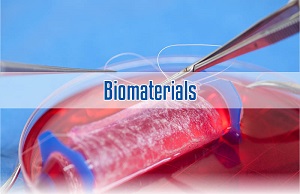
Biomaterials are materials which are used mainly in medical in order to repair or replace the damaged tissue. They have great impact on cell growth and proliferation of tissues. In the emergence of these biocompatible biomaterials as implants, augments that has remolded medical treatment, allowing the development in the fields of tissue engineering and medical bionic devices. Biosensors are the analytical devices which can convert biological responses into electrical signals. Biomaterials have many applications in medical filed such as cancer treatments, artificial ligaments and collagen tissue, joint replacements, bone plates, and applications in contact lenses, and having some non-medical applications such as to, blood proteins assays, growing cells in culture etc.
- Trio Biomaterials
- Bio-mineralization
- Biopolymers and Electro Active polymers
- Smart materials for body implants and prosthesis
- Bio-inspired and biomimetic smart materials and systems
- Smart materials for drug delivery systems
- Smart materials for medical imaging
- Tissue repair and regeneration
- Biomaterials and Regenerative Medicine
- Smart biosensors and devices
- Implant Development
- E-Textiles and Fabrics
- Bio Plastics
- Computational and Curing Composites
- Materials in Dentistry
Track 17: Emerging Materials

Emerging materials is a multifaceted theme dealing with the discovery and designing of new materials. Emerging substances and nanotechnology is an interdisciplinary subject of science and engineering incorporating large vary of natural and man-made materials that relates the structure, synthesis, properties, characterization, performance and material processing. The engineering of materials has advancement in healthcare industries, clinical device, electronics and photonics, electricity industries, batteries, fuel cells, transportation, and nanotechnology. It goals at creating substances at the Nano, micro and macro scales and entails quite a few subjects such as biomaterials, structural materials, chemical and electrochemical materials science, computational materials science, electrochemical materials. The advances in substances lead to new revolutions in each discipline of engineering. Material scientist and engineers can improve new materials with more suitable overall performance through modifying the floor properties. Emerging applied sciences are those technical improvements which symbolize revolutionary developments inside a field for competitive advantage.
- Graphene
- Claytronic
- Conductive Polymers
- Meta Materials
- Fullerene
- Quantum Dots
- Sustainable Building
- Structural Health Monitoring
- Smart Robots
- Design and Theory of Smart Surfaces
- Smart Biomaterials
- Sensing and Actuation
- Advanced Packaging
- Shape-memory Alloy
- Piezoelectric Materials
- Electrochromic Materials
- Smart Textiles and Wearables
Track 18: Advanced Structural Materials

Common engineering materials reach in many applications their limits and new developments are required to fulfil increasing demands on engineering materials. The performance of materials can be increased by combining different materials to achieve better properties than a single constituent or by shaping the material or constituents in a specific structure. The interaction between material and structure may arise on different length scales, such as micro-, meso- or macroscale, and offers possible applications in quite diverse fields.
- Classical fibre-reinforced composites (e.g. glass, carbon or Aramid reinforced plastics)
- Metal matrix composites (MMCs)
- Micro porous composites
- Micro channel materials
- Multilayered materials
- Cellular materials (e.g., metallic or polymer foams, sponges, hollow sphere structures)
- Porous materials
- Truss structures
- Nanocomposite materials
- Coated materials
- Structural Light Alloy Materials
- Amorphous and High-entropy Alloys
- Pipe and Pressure Vessel Materials
- Superalloys
- Casting and Solidification
- Powder Metallurgy
- Surface Treatment
- Concrete Materials
- Thermo-Chemical Treatment
- Modelling and Simulation
- Foundry Technology
Track 19: Ceramics and Composite Materials
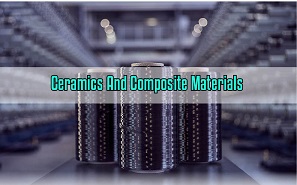
Ceramics are an incredibly diverse family of materials whose members span traditional ceramics (such as pottery and refractories) to the modern day engineering ceramics (such as alumina and silicon nitride) found in electronic devices, aerospace components and cutting tools. Whilst the most extravagant claims of the 1980s in favour of advanced ceramic materials (such as the all ceramic engine) have largely proved inaccurate, it is true to say that ceramics have established themselves as key engineering materials.
When used in conjunction with other materials, usually metals, they provide added functionality to components thereby improving application performance, once the appropriate joint design and technology have been identified. Ceramics are used as the reinforcement of composite systems such as GRP (glass reinforced plastics) and metal matrix composites such as alumina reinforced aluminium (Al/Al 2O 3). Advanced ceramic materials are also used as the matrix materials in composites. Currently the most widely available materials are based on SiC and carbon.
Engineering ceramics are used to fabricate components for applications in many industrial sectors, including ceramic substrates for electronic devices, turbocharger rotors , and tappet heads for use in automotive engines. Other examples of where advanced ceramics are used include oil-free bearings in food processing equipment, aerospace turbine blades, nuclear fuel rods, lightweight armour, cutting tools, abrasives, thermal barriers and furnace/kiln furniture.
- Ceramic coatings
- Ceramics in Electrochemical cells
- Ceramics for Medical and Scientific products
- Ceramic crystal structures
- Physical Ceramics for Engineers
- Ceramics for high performance applications
- Ceramic Capacitor Dielectrics
- Electromagnetic waves in ceramics
- Comminution Equipment in ceramic industry
- Ceramics for dental applications
- Rheological properties of glasses
- Material Balance for Ceramic Process
- Evolution of kilns in ceramic industries
- Chemistry and Physics of clays and other ceramic materials
- CNS Composites
- Polymer Composites
- Fibre Composites
- Metals and Alloys
- Composite Materials in Day-to-Day Life
- Biocomposite Materials
Track 20: Applications of Smart Materials
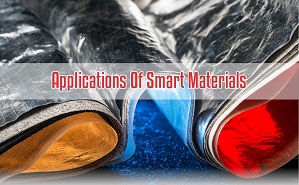
There are many chances for Smart Materials and structures in the manmade world. Smart Materials can provide the maintenance engineers a clear report on the performance history of the material and the location of defects as well. These materials can counteract to dangerous conditions such as excess vibrations and affect the self-repair. Smart materials will have any vast area of applications that help to achieve technological objectives. This results in smart materials and structures that will be helpful in solving engineering problems with hitherto unachievable efficiency and provide the opportunity for creating a new product.
- Smart Materials in Aerospace
- Smart Materials in Civil Engineering Applications
- Structural Application of Smart Materials
- Aerospace
- Mass Transit
- Marine
- Automotive
- Computers and other electronic devices
- Medical equipment applications
- Consumer goods applications
- Civil engineering
- Rotating machinery applications
Market Analysis
SUMMARY:
(Theme: Unveiling the Advancements in Material Science and Engineering)
The “9th International Conference on Smart Materials and Structures” is the podium to share and gain knowledge from the novel technological developments in the field of science, Engineering and Technology. This conference brings together professors, researchers, scientists, students in all the areas of Material science, Engineering and Nanotechnology. It offers an international opportunity for the spreading of approved research. We are honoured to invite you all to attend and register for the 9th International Conference on Smart Materials and Structures. Smart Materials Congress 2020 is scheduled for June 22-23, 2019 in Zurich, Switzerland.
The organizing committee is spacing out for an exciting and enlightening conference program that comprises of plenary lectures, symposia, workshops on multiple topics, poster presentations and numerous programs for participants from all over the world. We invite you to join us at 9th International Conference on Smart Materials and Structures, where you will be sure of having an eloquent experience with scholars from around the world. All members of the Smart Material Congress 2020 organizing committee look forward to meeting you in Zurich, Switzerland.
Importance & scope:
The Material Research encompasses the fundamental studies of materials structure - property relationships for the current and future importance in the field of science and engineering. The development of materials in industrial application was improved by the formation of academic programs and research institutes around the globe.
The National Nanotechnology Initiative (NNI) was established principally since Nano science and technology are foretold to have a huge potential economic impact. It is strongly believed that mutual impact of industrial and information technology may approach the magnitude of change that could result from commercialization of material nanotechnology.
The emphasis on the processing of new materials facilitates its applications to the next generation of engineers and its high marketability has a great impact on the economy. In the new decade, the sustainability and influence on the environment lie in the core of the material improvement.
Why to attend?
Smart Materials Congress 2020 provides a striking opportunity to meet and make new contacts that link us with delegates who are active in the field of material science, Biomaterials and nanotechnology. It offers comprehensive sessions on recent strategies and advances in the development of new materials. Networking enables sharpening skills, spark inspiration and uncover new ideas during break-out sessions providing tea and lunch for the delegates. The important subjects are addressed by the expertise key note speakers with global recognition thus conferring knowledge on the new technologies and latest drift in the domain.The 8th International Conference on Smart Materials and Structures accents the prominent key note speakers, plenary speeches, young research forum, poster presentations, technical workshops and career guidance sessions.
Global Markets of Materials:
The universal smart materials market is expected to spread USD 98.2 billion by 2025, affording to a report by Grand View Research, Inc. Extensive research & innovation activities have expanded the industrial applications of smart materials. Enlarged usage of smart actuators & motors, sensors, and structural materials is predicted to boost the demand over the next few years.
Smart materials are innovative products that can sense and respond to a wide-ranging stimuli, comprising electric and magnetic fields, mechanical stress, hydrostatic pressure, nuclear radiation, temperature, pressure, and pH change. Exclusive properties of these products allow them to revert to their original state after removal of the stimuli.
Piezoelectric, electrostrictive, electrochromic, magnetostrictive, phase change, shape memory materials have engorged extensive industrial acceptance in the current past. Moreover, ferromagnetic electroactive polymers, conductive polymers, carbon nanotube actuators and shape memory alloys, are few of the budding materials in the market, with vigorous application.
North America was the foremost area in the worldwide market in 2016, mainly due to significant claim for smart actuators & motors in crucial industries such as automotive, aerospace and consumer goods. Europe has been the second-largest share of the market in 2016, trailed by Asia Pacific. Asia Pacific is projected to unveil a extraordinary development over the prediction period, due to noteworthy research activities reinforced by the government.
The metamaterial marketplace is likely to be valued at USD 4,634.8 Million by 2025, at a CAGR of 63.1% from 2017 to 2025. The cumulative apprehension for variability in design functionalities, anti-glare coating applications, and invisibility cloak for stealth aircraft are the significant aspects to drive the development of metamaterial market.
The advanced materials & technologies in electronics signify the novel or modification to the current materials & technologies to attain superior performance or efficiency. The market for the topmost advanced materials & technologies in electronics is observing high growth due to the rising end-use applications, technological advances, and the high demand of these technologies from both the industrialized and developing regions.
The LED materials market is expected to reach USD 12.55 Billion by 2021, at a CAGR of 9.9% between 2016 and 2021. The rising demand of LEDs in general and automotive lighting drives the LED materials market. The base year for the study is 2015, whereas the predictable retro is from 2016 to 2021.
The worldwide core materials market for composites is predictable to rise from USD 1.17 Billion in 2016 to USD 1.92 Billion by 2022, at a CAGR of 8.77% from 2017 to 2022. The usage of core materials is becoming dynamic in wind energy, aerospace, marine, transportation, construction and other industries. The leading manufacturers of core materials are Evonik Industries AG (Germany), Armacell International S.A (Luxembourg), Plascore Incorporated (U.S.), Euro-Composites S.A (Luxembourg), Diab Group (Sweden), 3A Composites (Switzerland), Gurit Holding AG (Switzerland), Hexcel Corporation (U.S), and The Gill Corporation (U.S.). These producers executed numerous organic and inorganic developmental methods.
The global aerospace materials market is likely to reach USD 25.80 Billion by 2022, at a CAGR of 6.9% between 2017 and 2022. Increased passenger transportation is expected to develop the aircraft production industry that initiates the demand for aerospace materials. The primary aerospace material companies are Alcoa Corporation (U.S.), Cytec Solvay Group (Belgium), Constellium N.V. (Netherlands), Du Pont (U.S.), Teijin Limited (Japan), ATI Metals (U.S.), Toray Industries, Inc. (Japan)
The locomotive lightweight material market is likely to grow at a CAGR of 13.06% between 2016 and 2021 and achieve a market size of USD 110.42 Billion by 2021. The significant drivers of the market are the rigorous emission and fuel economy regulations, coupled with the targets on weight reduction, by the regulatory authorities and the rise in sales of electric vehicles in the emerging countries.
The silicon carbide (SiC) market size is likely to be esteemed at USD 617.4 Million by 2022, at a CAGR of 17.4% from 2017 to 2022. The features such as the capacity of SiC devices in semiconductor to perform at high temperature and high voltage and power, growing demand for motor devices, ability to decrease the overall system size, and rising applications of SiC in radio frequency (RF) devices and cellular base station are projected to drive the progress of silicon carbide market
The soft magnetic materials market is expected to achieve USD 42.14 Billion globally in 2026, at a CAGR of 8.1%, between 2016 and 2026. Soft magnetic materials offer good permeability and help in the decrease of eddy current losses. Companies are capitalizing in R&D for the growth and building of high quality soft magnetic materials. The cumulative automotive end-user industry is one of the chief drivers for the soft magnetic materials market. The soft magnetic materials are tremendously useful in several applications such as motors, transformers, and alternators.
The global 3D printing materials market is predictable to raise from USD 530.1 Million in 2016 to USD 1,409.5 Million by 2021, at a CAGR of 21.60% throughout the same period. The high progress of the market is owing to the adoption of 3D printing technology in Germany, U.S., and developing countries. The rising aerospace & defense, medical & dental, and automotive industries in these countries are driving the 3D printing materials market.
The electric vehicle plastics market is likely to raise at a CAGR of 27.82% from 2016 to 2021, to reach a market size of USD 1.49 Billion by 2021. Main drivers of this market include the favorable government policies, that leads to the advancement in the sales of electric vehicles, stringent emission regulations, demand for light weighting to achieve fuel efficiency, and the demand to improve ergonomics.
Major Material Science Associations around the Globe
- American Chemical Society (ACS)
- American Physical Society (APS)
- The Materials Information Society (ASM International)
- The Materials Research Society (MRS)
- Microscopy Society of America (MSA)
- The Minerals, Metals & Materials Society (TMS)
- Sigma Xi: The Scientific Research Society
- International Society for Optical Engineering (SPIE)
- The American Ceramic Society (ACerS)
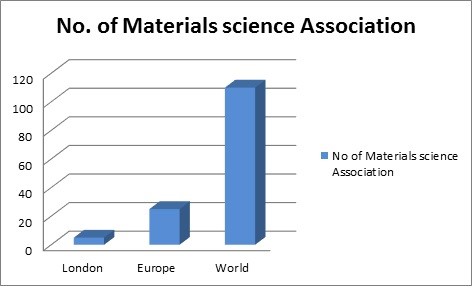
Statistical analysis of Materials Science associations
Major Nanotechnology Associations around the Globe
- EU Seventh Framework Programme (Europe)
- Brazilian Nanotechnology National Laboratory (Brazil)
- National Institute for Nanotechnology (Canada)
- Collaborative Centre for Applied Nanotechnology (Ireland)
- National Nanotechnology Center (Nanotech), Thailand
- Nano medicine Roadmap Initiative (USA)
- American National Standards Institute Nanotechnology Panel (ANSI-NSP)
- Nano Ned (USA)
- National Nanotechnology Initiative (USA)
- National Center for Nano science and Technology (China)
- National Centre for Nano-Structured Materials, CSIR (India)
- Institute of Nano Science and Technology (India)
- Iranian Nanotechnology Laboratory Network (Iran)
- Russian Nanotechnology Corporation (Russia)
- Sri Lanka Institute of Nanotechnology (Sri Lanka)
Target Audience:
- Materials Scientists/Research Professors/ Nanotechnologists
- Physicists/Chemists
- Junior/Senior research fellows of Materials Science/ Nanotechnology
- Materials Science Students
- Directors of material companies
- Material Engineers
- Members of different Materials science associations
- Members of different nanotechnology associations
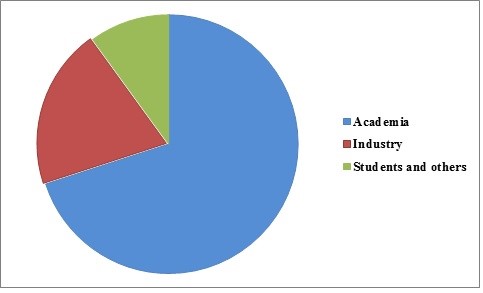
Graphical Representation of Attendance from different sectors:
The global market analysis report in terms of graphical representation
Learn More
UNIVERSITIES OF MATERIAL SCIENCE
Material Science Universities in Europe
University Of Cambridge | Material Science Conferences | Smartmaterials and structures conferences | University Of Manchester | Smart Materials Conferences | University Of Stuttgart | Structures Conferences | University Of Oxford | Nanomaterials Conferences | University Of Southampton | Nanotechnology Conferences | Chalmers University of Technology | Smartmaterials conference | Biomaterials Conferences | Technical University of Denmark | Sustainable Energy Conferences | Smart materials congress | Technical University of Munich | Emerging Materials Conferences | The University Of Sheffield | Smart Materials in Architecture Conferences | University College London | Optic Material Conferences | University of Birmingham | Materials Conferences | Alloys Conferences | Lomonosov Moscow State University | Energy Conferences | Loughborough University | University Of Groningen | University Of Liverpool | Fluoroscence Conferences | University Of Strathclyde | Materials conferences | Delft University Of Technology | Control System Conferences | Rwth Aachen University | Material Science Conferences | Smart structures conference | Smart Materials Conferences | Smartstructures conferences | Structures Conferences | Nanomaterials Conferences | Nanotechnology Conferences | Biomaterials Conferences | Sustainable Energy Conferences | Emerging Materials Conferences | Smart Materials in Architecture Conferences | Optic Material Conferences | Materials Conferences | Alloys Conferences | Fluoroscence Conferences | Energy Conferences | Control System Conferences | Smartmaterials and structures conference
Material Science Universities in Asia
Nanyang Technological University, Singapore (NTU) | Materials Conferences | Emerging Materials Conferences | National University Of Singapore (NTU) | Material Science Conferences | Smartmaterials and structures conferences | Tsinghua University | Structures Conferences | The University Of Tokyo | Optic Material Conferences | Peking University | Tohoku University | Fluoroscence Conferences | Smartmaterials conference | Smart materials congress | Materials conferences | Seoul National University | Fudan University | Alloys Conferences | Kyoto University | Smartstructures conferences | Smart structures conference | Energy Conferences | Shanghai Jiao Tong University | Nanomaterials Conferences | Biomaterials Conferences | Smart Materials in Architecture Conferences | Sungkyunkwan University (SKKU) | National Taiwan University (NTU) | Osaka University | Nanotechnology Conferences | National Tsing Hua University | Hanyang University | Hokkaido University | Fudan University | Indian Institute Of Science | Sustainable Energy Conferences | Harbin Institute Of Technology | Control System Conferences | Hokkaido University | Smart Materials Conferences | Kaist University | Smartmaterials and structures conference
Material Science Universities in USA
Massachusetts Institute Of Technology | Stanford University | Smartstructures conferences | Nanomaterials Conferences | University Of California | Northwestern University | Emerging Materials Conferences | Alloys Conferences | Georgia Institute Of Technology | Biomaterials Conferences | Smart Materials in Architecture Conferences | University Of Illinois At Urbana-Champaign | Material Science Conferences | University Of Texas at Austin | Mcgill University | Materials conferences | Fluoroscence Conferences | University Of Toronto | Smart Materials Conferences |Brown Univesity | Columbia University | Mcmaster University | Smartmaterials and structures conferences | Sustainable Energy Conferences | Cornell University | Smart materials congress | Nanotechnology Conferences | Smartmaterials conference | Optic Material Conferences | Carnegie Mellon University | University of Michigan | Control System Conferences | Structures Conferences | Purdue University | Materials Conferences | Rice University | Columbia University | Duke University | John Hopkins University | North Carolina State University | The Ohio State University | Energy Conferences | Case Western Reserve University | Smartmaterials and structures conference | Smart structures conference
Companies for Smart Materials in Europe
ACI Laser GmbH | CKW Engineering | Smart Materials Conferences | Moor Down Contractors | Control System Conferences | Smartstructures conferences | Ceramtec ag | mechanical and ferrous ltd | piezosystem jena gmbh | Nanotechnology Conferences | piezocryst -advanced sensorics gmbh | Optic Material Conferences | acreo | greenteg | Smartmaterials conference | Materials conferences | Durham magneto optics | Fluoroscence Conferences | Suprapolix | Emerging Materials Conferences | Harry Burnicle electrical & mechanical contractors | Smart materials congress | Smartmaterials and structures conferences | Structures Conferences | CK services commercial AC Mechanical services | Smart structures conference | Elite solutions Engineering ltd | Nanomaterials Conferences | Biomaterials Conferences | Safe hands Mechanical & Electrical ltd | Alloys Conferences | TT Engineering | Smart Materials in Architecture Conferences | B&F mechanical services ltd | Material Science Conferences | Mechanical services (UK) LTD | Materials Conferences | Shearstone mehanical ltd | GAEL Engineering ltd | Energy Conferences | Stopaq | Sustainable Energy Conferences | Merquinsa | Buckler Engineering Services | Applied Graphene Materials | Smartmaterials and structures conference
Companies for Smart Materials in Asia
Wah ling Mechanical Engineering | Materials Conferences | Emerging Materials Conferences | Eugen Arnold Pte ltd | Structures Conferences | Materials conferences | Alloys Conferences | Santak metal manufacturing Pte ltd | Smartmaterials and structures conferences | Control System Conferences | lintrex pte ltd | Smartmaterials conference | United Engineers Pte ltd | Nanomaterials Conferences | Smartstructures conferences | Ditton Engineering Pte ltd | Smart materials congress | Edgen Murray pte ltd | Smart Materials Conferences | Tiang Wah Manufacturing Co.Pte ltd | PH Hydraulics & Engineering ltd | Smart structures conference | Smart Materials in Architecture Conferences | NGK Machine tools | Piezoelectric R&D Co. Ltd | Optic Material Conferences | Gintech | Biomaterials Conferences | Suntech | Energy Conferences | Yingli | Sustainable Energy Conferences | Kyocera | Sharp | Nanotechnology Conferences | Material Science Conferences | ZIEHL-ABEGG sea Pte ltd | Fluoroscence Conferences | Smartmaterials and structures conference
Companies for Smart Materials in USA
The Boeing Company | Emerging Materials Conferences | Desktop Metal | Smart Materials Conferences | Optic Material Conferences | Ford Motor Company | Structures Conferences | Nanotechnology Conferences | Alloys Conferences | Rethink Robotics | Nanosys | Checkerspot | Riffyn | Smart materials congress | 1366 Technologies | Smart materials and structures conferences | Nanomaterials Conferences | Control System Conferences | Loch heed Martin Corporation | Smartmaterials conference | Smart Materials in Architecture Conferences | Aviadvigatel | Bystronic | ECH will | HAWE Hydraulik SE | Materials conferences | Kirov plant | Smartstructures conferences | Korber Process solutions | Mechon | Reactive surfaces | First solar | Electrochromics | Fluoroscence Conferences | American Piezo Ceramics Inc | Material Science Conferences | Trs Ceramics Inc | Silicium Energy | Phononic devices inc | Energy Conferences | MetamateriaTechnologies | Biomaterials Conferences | Smart structures conference | Materials Conferences | Nextreme Thermal solutions | Autonomic Materials | Autonomous Material Systems | Sustainable Energy Conferences | Sensor Technology | Austin materials | Boxley Materials | Smartmaterials and structures conference
SOCITIES/ASSOCIATIONS FOR SMART MATERIALS
Socities/Associations for Smart Materials in Europe
Federation of European Materials Societies | Smart Materials Conferences | Control System Conferences | European Materials Research Society | Structures Conferences | Spanish Association for Composite Materials | Materials Conferences | Austrian Society for Metallurgy and Materials | Materials conferences | Czech Society for New Materials and Technologies | Smartmaterials and structures conferences | Nanomaterials Conferences | Danish Metallurgical Society | European Composites Industry Association | Material Science Conferences | Emerging Materials Conferences | Smart Materials in Architecture Conferences | International Association of Science and Technology for Development | Smart materials congress | Optic Material Conferences | International Union of Materials Research Societies | Smartmaterials conference | Nanotechnology Conferences | Alpha Sigma Mu International Professional Honor Society for Materials Science and Engineering | Biomaterials Conferences | National Society of Professional Engineers | Smartstructures conferences | The European University Association | Alloys Conferences | European Association for Structural Dynamics | The International Association for Structural Control (IASC) | European Association for the Control of Structures | Fluoroscence Conferences | German Materials Society | Sustainable Energy Conferences | European Composites Industry Association | Energy Conferences | International Association for Bridge and Structural Engineering,IABSE | Smartmaterials and structures conference | Smart structures conference
Socities/Associations for Smart Materials in Asia
Materials Research Society of Singapore | The Association of East Asian Research Universities | Smartmaterials conference | Japan Society for Composite Materials | Smartstructures conferences | Control System Conferences | Chinese Society for Metals | Smart Materials Conferences | Sustainable Energy Conferences | Fluoroscence Conferences | International Association of Advanced Materials | Structures Conferences | Smartmaterials and structures conferences | Emerging Materials Conferences | Australian Composite Structures Society | Nanomaterials Conferences | Smart Materials in Architecture Conferences | Smart materials congress | Alloys Conferences | Energy Conferences | International Organization of Materials, Metals and Minerals Societies | Smart structures conference | Nanotechnology Conferences | National Materials Advisory Board | Materials conferences |Biomaterials Conferences | Brazilian Composite Materials Association | Optic Material Conferences | National Materials Advisory Board | Material Science Conferences | Society of Materials Science | The Association of East Asian Research Universities | Materials Conferences | The Japan Federation of Engineering Societies,JFES | Smartmaterials and structures conference
Socities/Associations for Smart Materials in USA
American Society for Engineering Education (ASEE) | American Society of Mechanical Engineers (ASME) Materials Conferences | | Biomaterials Conferences | Smartmaterials conference | Smartstructures conferences | American Society for Testing and Materials (ASTM) | Smart Materials Conferences | Alloys Conferences | Smart materials congress | The Materials Information Society | Optic Material Conferences | Smartmaterials and structures conferences | Materials conferences | The Materials Research Society (MRS) | Nanomaterials Conferences | Emerging Materials Conferences | Smart Materials in Architecture Conferences | Fluoroscence Conferences | Society of America (MSA) | Smart structures conference | Structures Conferences | The Minerals, Metals & Materials Society (TMS) | Sigma Xi: The Scientific Research Society | Sustainable Energy Conferences | The American Ceramic Society (ACerS) | Control System Conferences | American Society of Mechanical Engineers (ASME) | Material Science Conferences | American Society for Nondestructive Testing (ASNT) | American Welding Society (AWS) | Energy Conferences | ASM International (ASM) | Nanotechnology Conferences | Association for Iron & Steel Technology (AIST) | Smartmaterials and structures conference
Advanced Functional Materials | Advanced materials | Materials Today | Smartmaterials conference | Material Science Conferences | Annual Review of Materials Research | Energy Conferences | Smartstructures conferences | Emerging Materials Conferences | Energy storage materials | Smart Materials Conferences | Materials conferences | Cement and Concrete research | Fluoroscence Conferences | npj Computational materials | Smart structures conference | Sustainable Energy Conferences | NPG Asia Materials | Alloys Conferences | Cement and Concrete Composites | Materials Research Letters | Smart Materials in Architecture Conferences | 2D Materials | Materials Conferences | Smartmaterials and structures conferences | Smart materials congress | Applied Materials Today | ACS Applied Materials & Interfaces | Nanotechnology Conferences | Optic Material Conferences | Advances in Materials Research | Control System Conferences | Materials and Design | Structures Conferences | Journal of Biomaterials Conferences | Materials Chemistry | Annual Review of Condensed Matter Physics | Nano letters | Nanomaterials Conferences | Nature materials | Nature Nanotechnology | Progress in Materials Science | Materials Horizons | Smartmaterials and structures conference
Materials Engineer | Advanced Material Scientist | Emerging Materials Conferences | Postdoctoral Appointee | Development Engineer | Thin Film Materials Scientist | Smart structures conference | Materials Research Engineer | Smart Materials Conferences | Project Engineer | Material Science Conferences | Co-Op-Welding Engineer | Smartmaterials and structures conferences | Materials Innovation Engineer | Nanomaterials Conferences | Materials Coordinator | Sustainable Energy Conferences | Safer Materials and Biocompatibility Manager | Materials Technician | Smart materials congress | Control System Conferences | Materials and Process Engineers | Materials conferences | Packaging Materials Engineering Manager | Structures Conferences | Smartstructures conferences | Semiconductor Materials Engineer | Smart Materials in Architecture Conferences | Hazardous Materials Handler | Energy Conferences | AGC Research Scientist | Alloys Conferences | Smartmaterials conference | QC Raw materials Specialist | Nanotechnology Conferences | Dieleectric Materials Technologist | Biomaterials Conferences | Metallic Materials Engineer | Optic Material Conferences | SCM materials Manager | Fluoroscence Conferences | Materials life Specialist | Metallurgist | Materials Conferences | Materials and Coatings Engineer | Smartmaterials and structures conference

